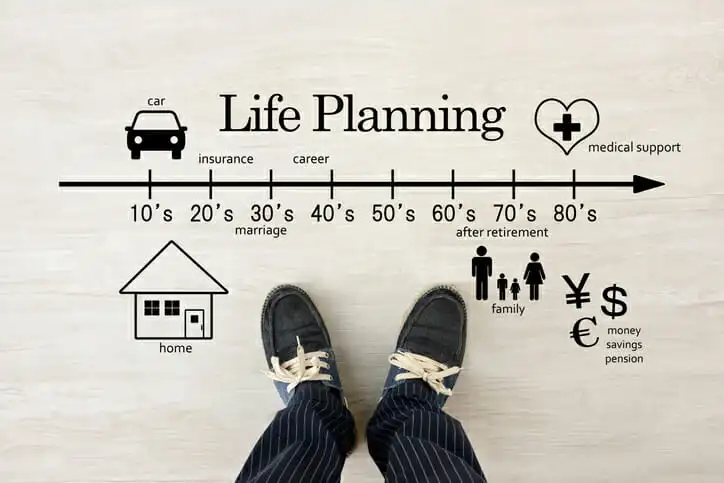A $10 million nest egg will pay for a comfortable retirement for the majority of retirement savers. However, whether that much is enough to fund any specific retiree’s golden years depends on a number of factors. This includes pre-retirement lifestyle and spending habits, the number of years a retiree will live after retirement, and the returns earned on a portfolio of investments.
A financial advisor could help you create a financial plan to protect your retirement savings and reach your financial objectives.
Key Factors to Consider When Retiring With $10 Million
Funding a comfortable retirement involves a lot of moving parts. And, depending on your circumstances, it can be difficult to estimate with accuracy. However, you can calculate an approximate answer regarding whether $10 million is enough for retirement by considering these four main factors.
Length of Retirement
One of the most important factors in determining whether a $10 million nest egg will be sufficient is how long your retirement will last. This involves two key variables: when you retire and how long you live. While the average retirement age in the U.S. is 64, many individuals choose to retire earlier or later depending on their personal and financial situations. The longer you remain retired, the more your portfolio needs to support you, potentially for three decades or more.
According to the Social Security Administration, a 65-year-old man can expect to live another 16.9 years on average, while a 65-year-old woman may live another 19.5 years. However, these are just averages. Many people live well into their 90s or even past 100, especially with advances in healthcare and lifestyle improvements.
Planning for a retirement that lasts 30 years or longer requires a careful balance of preserving capital, generating income and accounting for inflation. High-net-worth retirees could consider products like annuities for guaranteed income or longevity insurance to help mitigate the risk of outliving their assets.
Expenses in Retirement
Your retirement spending habits play a direct role in how long your retirement savings will last. According to the most recent Bureau of Labor Statistics data, the average household headed by someone 65 or older spent about $35,605 annually, this number varies widely based on lifestyle, location and personal health. For high-net-worth individuals with a $10 million portfolio, spending is likely to exceed the national average, especially if it includes travel, luxury purchases or maintaining multiple residences.
Creating a detailed retirement budget is key to understanding your financial needs. Break expenses down into essential (housing, food, healthcare) and discretionary (entertainment, travel, gifts) categories. Also consider irregular costs such as home repairs, long-term care or supporting family members.
Healthcare costs, in particular, can be a major variable. Even with Medicare, retirees may face high out-of-pocket costs for services not covered, such as dental, vision or extended care. Planning ahead with supplemental insurance or long-term care coverage can help manage this risk.
Amount of Income
The income your portfolio generates plays a crucial role in how comfortably you can live in retirement. A $10 million nest egg provides a strong foundation, but how effectively that capital works for you depends on asset allocation and market performance. Investment returns can vary widely, from less than 1% in ultra-conservative savings accounts to 8–10% or more in equity-heavy portfolios during strong markets.
For a retiree seeking stable income, a balanced portfolio might generate 3% to 5% annually. That translates to $300,000 to $500,000 per year without drawing down principal. Some retirees opt for fixed-income products like annuities, which can provide predictable returns, such as a 5% fixed-rate annuity that yields $500,000 annually. Others invest in dividend-paying stocks, real estate or municipal bonds to create diversified income streams.
The key is aligning your income strategy with your risk tolerance, liquidity needs and tax situation. For example, municipal bonds may offer tax-free interest, while REITs can provide high yields with some market risk. A diversified income approach can help weather market fluctuations while delivering consistent cash flow.
Working with a financial advisor can also help you build an income-generating portfolio tailored to your retirement goals and ensure that your investment returns support your lifestyle without taking on unnecessary risk.
Withdrawal Rate
Your withdrawal strategy — the rate at which you take money from your portfolio — is one of the most important elements of retirement planning. Rather than relying solely on investment returns, most retirees draw from both income and principal to fund their lifestyles. A widely cited rule of thumb is the 4% rule, which suggests that withdrawing 4% of your portfolio in the first year of retirement, adjusted for inflation each year, gives you a strong chance of your savings lasting for 30 years.
For a $10 million portfolio, this equates to a $400,000 withdrawal in the first year. This approach offers a structured way to manage spending and avoid depleting your savings too quickly. However, it’s not a one-size-fits-all solution. Some retirees prefer to start with a lower rate, such as 3.5%, to account for longevity risk or economic uncertainty, while others may withdraw more aggressively early on and taper down later.
This strategy, known as decumulation, should also consider other factors such as expected market returns, inflation, healthcare costs and legacy goals. If leaving a financial inheritance is a priority, you may want to withdraw less and preserve more of your principal.
Retirement Unknowns
A $10 million retirement fund leaves a lot of room for variations in many of the key factors that control whether your retirement will be financially comfortable or challenging.
Losses due to legal troubles, failed businesses, financial abuse by trusted associates and excessively lavish lifestyles have produced similar economic disasters for any number of previously prosperous people. For those of more ordinary means, medical costs are often the most common cause of personal bankruptcy. A financial advisor can help you create a plan designed to address or minimize the impacts of some of these possibilities.
You should also take into account other universal uncertainties. The future course of taxes, inflation, interest rates and investment returns can impact your retirement portfolio. This is why it’s a good idea to rebalance your retirement investments and review your strategies accordingly.
Bottom Line

A retirement portfolio of $10 million will very likely cover the retirement needs of most people. Whether it’s enough to support a comfortable retirement for any given person depends on different factors. Important ones include age at retirement, life expectancy, lifestyle and spending habits, and how much the portfolio earns. While many key elements can’t be predicted with certainty, and wild cards can also impact any financial plan, an eight-figure nest egg is likely to be more than enough.
Retirement Planning Tips
- A financial advisor can provide expert insight into the preparation of a plan that will take into account the size of your retirement savings and expected circumstances in retirement. SmartAsset’s free tool matches you with up to three vetted financial advisors who serve your area, and you can interview your advisor matches at no cost to decide which one is right for you. If you’re ready to find an advisor who can help you achieve your financial goals, get started now.
- SmartAsset’s Retirement Calculator is a free and convenient way to get a handle on your financial situation in retirement. It considers your retirement age, income, location and other factors to tell how much you need in retirement savings.
Photo credit: ©iStock/jacoblund, ©iStock/takasuu
